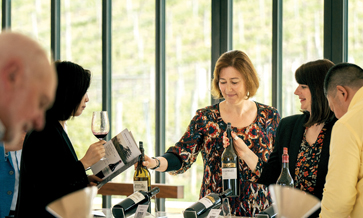Based mostly on the consumption patterns I see in our restaurants I can say that competition has forced better quality of wines to be produced and has resulted in a number of Indian labels receiving international accolades.
Since we are located in a tourist zone in Mumbai, we see a lot of foreigners dine with us (pre-Covid, of course). They are always excited to try the Indian wine selection. With Indian clients, we have to push them to give local wines a chance!
And yes, we highlight Indian produce on our wine list under a separate section entirely. I’m really proud of the growing number of wines that have made it to our list over the last 10 years.
Competitive products
When it comes to duties and taxes applied to imported wines, Indian wines definitely have a pricing advantage. But we are still dealing with a consumer mindset that assumes that more expensive is better quality. This seems to be having a reverse impact.
A few years ago, we invested in a sommelier on the floor for our single restaurant. This was done to not only give our diners a better experience but also to ensure ongoing training of our front of house team.
With a growing number of organisations offering certification, there is no dearth of training and education. Of course importers are always more than willing to train our teams on their portfolio of wines.
I have always given our team carte blanche to offer a tasting of a selection of Indian wines to interested guests. I am often asked for recommendations for wines to be served at parties at home.
I usually recommend a versatile white like the Source SB or Charosa SB, or a Grover Chene, or Krsma’s cab, if you’re lucky enough to get your hands on it!
This year, together with consultants like Nikhil Agarwal, we intend to roll out a programme called ‘Vinopedia’ to expose people to wine styles and varietals from all over the world. I think such initiatives will help build acceptance of Indian wines as a competitive product.
Bust myths
I think wine is still seen as an elite product that is restricted to star hotels and fine dining restaurants. If more restaurants incorporate wine lists into their beverage programme, it will encourage more people to try them.
There’s also a misconception that wine doesn’t go well with Indian food. Restaurants should work hard to shed that image. I would urge all F&B managers to drop the idea of fixed 30% beverage cost and make wines affordable and accessible.
I don’t know how much awards and accolades are known to people beyond the industry itself. Think about it, which restaurant wine list mentions awards? So how would a consumer, who isn’t really a wine aficionado, really know until after s/he has ordered?
At the end of the day, it’s only a quality product that will keep the consumer coming back for more.
I think Indian wine producers are doing a truly fantastic job from working with farmers, to supporting restaurants, to wine tourism. I believe the tourism department can also do more to offer support in this area.
I’m excited for the tremendous growth this industry has already seen, and for the potential ahead. I hope to see more Indian wines on international restaurant wine lists in the coming years.












